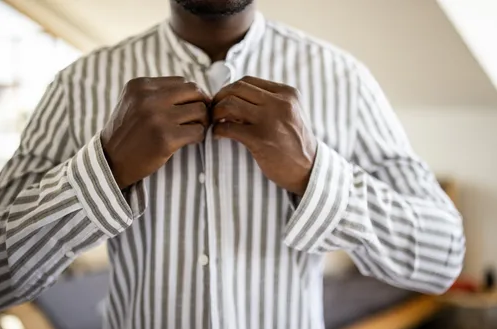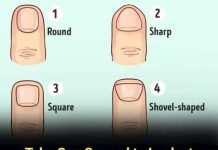The tradition of men’s shirts buttoning on the right and women’s on the left is a sartorial quirk that has puzzled many. Though seemingly arbitrary today, this distinction has deep historical roots, reflecting societal norms, technological advancements, and practical considerations of past eras.
Origins of Button Placement
Buttons, as fasteners, date back to the 13th century, initially serving as indicators of wealth and status. Their placement on garments wasn’t merely functional but also symbolic.
Men’s Shirts: Right-Side Buttoning
For men, buttons on the right side facilitated ease of dressing, especially considering that most individuals are right-handed. This design allowed men to dress themselves efficiently. Additionally, during times when swords were common accessories, having buttons on the right prevented interference when drawing a weapon from the left side .

Women’s Shirts: Left-Side Buttoning
In contrast, women’s clothing often featured buttons on the left side. This design choice is believed to have accommodated right-handed maids who dressed their mistresses, making it easier to fasten garments from the maid’s perspective . Moreover, affluent women wore elaborate clothing, and the left-side buttoning facilitated the dressing process by attendants .
Cultural and Practical Considerations
Several theories attempt to explain this gender-based button placement:
- Infant Care: Women often held infants with their left arm, leaving the right hand free to unbutton garments, making left-side buttons more practical.
- Horse Riding: Women riding sidesaddle faced the right side forward, and left-side buttons reduced wind exposure.
- Fashion Distinction: Differentiating men’s and women’s clothing through button placement helped maintain gender norms, especially when women’s fashion adopted masculine styles .
- Napoleonic Influence: An anecdotal theory suggests that Napoleon ordered women’s shirts to button on the opposite side to prevent them from mocking his signature pose .
Persistence of the Tradition
Despite changes in fashion and societal roles, the tradition of gendered button placement persists. This continuity is attributed to:
- Manufacturing Standards: Established production practices maintain consistency in button placement.
- Consumer Expectations: Shoppers associate button orientation with gender-specific clothing, influencing purchasing decisions.
- Design Heritage: Fashion often draws from historical patterns, perpetuating traditional elements .

Conclusion
The differing button placements on men’s and women’s shirts are remnants of historical practices shaped by practicality, societal norms, and cultural influences. While the original reasons may no longer be relevant, the tradition endures, reflecting the fashion industry’s blend of history and modernity. As fashion continues to evolve, these subtle details serve as reminders of our sartorial past.
In today’s world, where gender norms are increasingly being challenged and fashion is becoming more inclusive, some designers and brands are beginning to move away from traditional button placement altogether. Unisex clothing lines and gender-neutral fashion have grown in popularity, often featuring central or non-gendered closures. This shift signals a broader cultural movement toward self-expression and the breakdown of outdated societal expectations. Nonetheless, button orientation still plays a subtle role in reinforcing gender identity through clothing. Even in professional or formal settings, button direction often helps signal whether a garment is intended for men or women. For example, tailored blazers, shirts, and even outerwear like trench coats continue to follow the traditional rules of button placement.

















